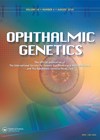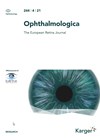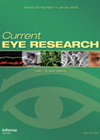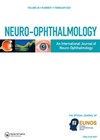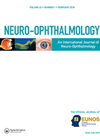Myopia in Han Chinese
The authors present a case-control study of 361 patients with high myopia (mean spherical equivalent of -6.0DS or lower, and axial length greater than or equal to 26mm) and 749 healthy controls (mean spherical equivalent -1.0 to +1.0DS). They tested...
Germline testing for uveal melanoma
The authors present a study of 114 consecutive patients presenting with uveal melanoma. Between 1 December 2019 and 1 November 2021 all patients over 18-years-old presenting to their centre with uveal melanoma were offered germline testing for variants in BAP1,...
Post hoc analysis of the CANTREAT randomised trial
CANTREAT, a Canadian multicentre two-year randomised trial compares treat and extend treatment (T&E) relative to the monthly administration of Ranibizumab in nAMD. Two-hundred and eighty-five treatment-naïve patients with nAMD were randomised to receive either a once-monthly dosing or T&E regimen...
Patient reported outcomes in adolescents with inherited retinal diseases
This was a two-centre validation study of two sets of patient reported outcome measures (PROMS) for adolescents (13-17- years-old) with inherited retinal diseases. The measures were the Michigan Retinal Degeneration Questionnaire (MRDQ) and the Michigan Vision-Related Anxiety Questionnaire (MVAQ). Both...
Brolucizumab in age-related macular degeneration, HAWK Study
The aim of the study was to collect additional data on efficacy and safety of brolucizumab 6mg intended for commercialization in age-related macular degeneration (AMD) (with an increase in pH and decrease in polysorbate concentration). The HAWK Study was a...
Association between neurodegeneration and macular perfusion in the progression of diabetic retinopathy
In this prospective three-year longitudinal study, the authors aimed to explore the relation between retinal neurodegenerative changes and vessel closure (VC) in individuals with non-proliferative diabetic retinopathy (NPDR). The participants included 74 individuals with type 2 diabetes, NPDR, and Early...
Sub-clinical detection methods in multiple sclerosis
Visually symptomatic multiple sclerosis (MS) provides only part of the required information to assist in understanding the disease. Recently, researchers have concentrated their efforts on diagnosing MS cases in the subclinical period. The aim of this paper was to assess...
Visual prognosis in Irish Leber’s hereditary optic neuropathy
Leber’s hereditary optic neuropathy (LHON) is an inherited optic neuropathy This paper presents a retrospective review of clinical data from patients with LHON presenting to an Irish tertiary referral ophthalmic hospital. Clinical and genetic characteristics were assessed for useful biomarkers...
Transient thickening of the macular retinal nerve fibre layer in acute optic neuritis
Acute optic neuritis (ON) causes axonal degeneration, which can be quantified from the blood by neurofilament protein (Nf) levels. Within about three months, atrophy of the retinal nerve fibre layer (RNFL) follows. However, it remains challenging to explain why there...
Assaying acetylcholine receptor antibodies in the diagnosis of ocular myasthenia
Myasthenia gravis (MG) is an autoimmune disease that leads to impaired neuromuscular transmission. Solely ocular manifestations of MG (OMG) occur in 15-50% of cases, most frequently in the form of fluctuating ptosis and diplopia. Most cases of OMG convert later...
Progression of macular atrophy on long-term anti-VEGF therapy for AMD
This retrospective study evaluated the progression of macular atrophy in 53 eyes of 53 patients receiving AntiVEGF Therapy for age-related macular degeneration (nAMD), for at least six years. None of the patients had any macular atrophy (MA) at presentation. MA...
Detecting apoptosis in retinal cells
This is a review paper in which the authors summarise the transitioning of techniques detecting apoptosis from bench to bedside, along with the future possibilities they encase. Detection of Apoptosis in Retinal Cells (DARC) technology can be used as a...


